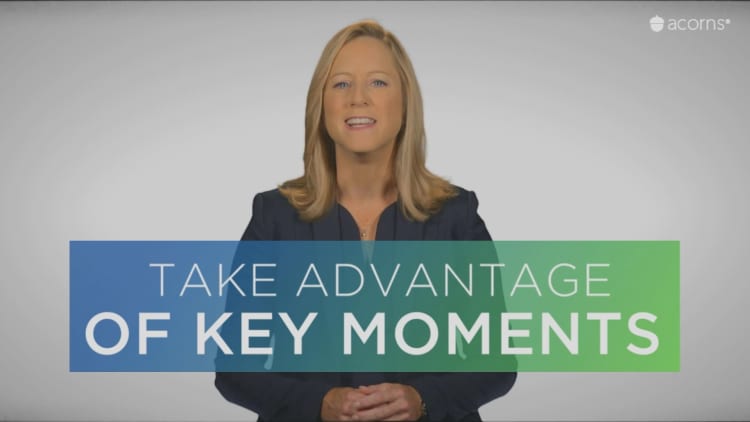The new year is fast approaching, and building an emergency fund for unexpected expenses should be at the top of your financial to-do list for 2020.
Having fast cash at the ready for emergency situations — be it a surprise medical bill, necessary home repair, job loss or even a speeding ticket — is essential to living a secure financial life.
Without such a fund, American families could be just one ill-timed event away from financial ruin or a long, expensive climb out of debt.
"In one form or another, every household should have an emergency fund to cover unexpected expenses," said Stephen Brobeck, a senior fellow at the Consumer Federation of America.
However, many consumers don't have such rainy-day funds at their disposal. Nearly 4 in 10 adults report that they wouldn't be able cover an unexpected $400 expense with cash or savings — meaning they'd have to resort to carrying a balance on credit cards, borrowing from friends or family, or be unable to handle the expense at all, according to the Federal Reserve Board.
More from Personal Finance
Credit card debt is worse for those with high income
This woman paid off $80,000 in student debt by age 31
Medical debt makes getting mortgages harder for some
According to a survey conducted this year by Bankrate, 36% of Americans reported either they or an immediate family member experienced at least one major unexpected expense during the past year.
And those expenses could be substantial. The median amount of consumers' costliest surprise bill in a 12-month period is $2,000, according to a survey of 7,800 households conducted the Pew Charitable Trusts, a nonpartisan research group.
How should consumers go about establishing an emergency fund?
1. Create a budget
Creating a financial budget of a household's monthly expenses is the first step in the process, according to certified financial planner David Wilson, a senior wealth manager at Watts Capital, a financial-advice firm based in New York. Financial planners typically recommend saving three to six months' worth of monthly expenses in an emergency fund.
Savers can dial this figure up or down depending on their circumstances, he said. For example, single individuals with no kids and no mortgage, those who are in high-demand career fields and people with multiple income sources (such as rental property) probably require less of a financial backstop.
On the other hand, a married couple carrying a large mortgage, supporting multiple dependents and other family members such as aging parents, and holding careers (such as commissioned salespeople) with variable income streams that could vary drastically from month to month should likely have a larger war chest.
At the very least, consumers should build a reserve of at least $1,000, Brobeck said, since the typical household incurs unexpected expenses in the range of roughly $300 to $500 several times a year.
2. Use automatic transfers
Most savers won't be able to magically make more than $1,000 materialize overnight. That's why financial experts recommend stockpiling emergency cash slowly over time using automated transfers from a checking account into a savings account held at a bank or credit union. Some employers can even transfer the money directly from a paycheck.
"Everybody ought to be saving automatically," Brobeck said. "That's really the only effective way to save."

Consumers can start small. Many banks and credit unions allow transfer amounts as low as $25 a month or per paycheck, Brobeck said. While it may take a while to amass $1,000, and ultimately three to six months' worth of household expenses, the important thing is to get in the habit of saving regularly.
Banks sometimes present challenges in the form of high balance requirements and fees if an account balance dips below a certain threshold — which is likely if a small account is tapped for an emergency situation.
Some financial institutions, often credit unions, offer low or no balance requirements, Brobeck said. Some institutions waive account fees if a consumer also maintains a checking account with the institution, or if the consumer agrees to set up automatic transfers into a savings account.
3. Manage financial priorities
Consumers may also find it challenging to juggle competing financial priorities, such as saving for retirement and paying down credit-card or student debt.
One strategy to address this hierarchy of financial needs is to build the emergency fund in stages, said Wilson, the financial planner.
"You can't really look at the emergency fund in isolation," Wilson said.

He recommends saving a month's worth of expenses first. Then, consumers can focus on paying off higher-interest debt above an 8% rate. If savers have $100, for example, they can divert $75 toward the debt and $25 toward the emergency fund. Next, try to save a second month of emergency expenses and then focus on paying off any lower-interest debt.
If consumers don't have debt, they should prioritize saving up to a company 401(k) match, if it's available, while also saving a little in an emergency fund.
4. A more advanced option
More sophisticated savers looking to earn higher interest on their emergency stash than that offered by a bank savings account could consider a two-pronged approach, said Maria Bruno, CFP, and head of U.S. wealth planning at Vanguard Group.
Such savers can put away half a month's worth of expenses, up to $2,000, in cash and the remainder in stocks or bonds held in a Roth or taxable brokerage account. These accounts typically earn a higher return than cash, and also provide ready access to funds.
Savers can tap their contributions to Roth accounts (but not their investment earnings) tax-free. Consumers who withdraw money from a taxable brokerage account would owe income tax on the stocks or bonds that had gained in value since purchase.


